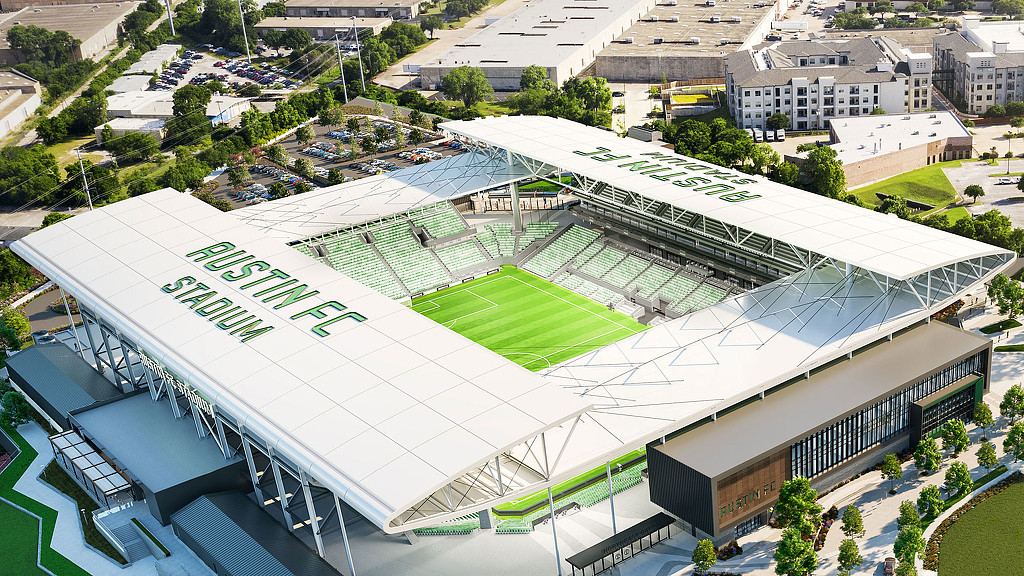Is the Virtual Fan Experience Ready for the Big Game?
May 18, 2020 | By Jonathan Emmett, Greg Gallimore
Editor’s Note: This post is part of our ongoing exploration of how design is responding to the COVID-19 pandemic.
The COVID-19 pandemic brought live sports and major sporting events around the world to an abrupt halt. But that was then. Today, some teams are considering getting back to the field, pitch, court, and ice, albeit inside empty arenas and stadiums, without fans.
In fact, we are still a long way from being able to safely fill up sports venues and get back to the live fan experience. To make that happen, sports teams will need to take critical measures, from revamped cleaning and sanitization measures, to maintaining physical distancing guidelines, and limiting the number of fans who can enter the stadium. Only then will returning fans be able to feel safe and at ease inside a stadium.
In the meantime, we’ve been thinking about how to recreate the fan experience virtually — and ultimately enhance it — so fans everywhere can feel like they are in the bleachers while watching the game at home. This could bring the sporting experience to fans in all new ways during the length of the pandemic, but it could also prove to be a viable business option for teams looking to expand their reach after the current crisis.
At Gensler, our Digital Experience Design (DXD) practice has been partnering with our Sports practice to shape this new reality over the past few years. Our clients come to us because of our unique capability to connect the physical and digital by delivering holistic, integrated strategies and designs for the built environment. They may come to us to keep up with the latest developments in technology, but for us, the focus is always on designing better human experiences.
For sports teams and owners, the question is no longer just, “how can we enhance the fan experience?” It’s now: “How can we enhance the fan experience and make these environments deliver a feeling of safety and comfort that brings people back into the stadium?” And until then, what can we do now to enhance the fan experience virtually?
Here’s a look at how technology has the potential to reshape sports venues and elevate the fan experience:
1. Visual cues are critical to enriching the experience for players and fans.As sports leagues resume play with fan-free zones, they’re finding creative ways to recreate the fan experience visually. In Taiwan, the Chinese Professional Baseball League has used life-size cardboard cutouts of fans, mannequins, and bands of robot drummers to provide players with visual cues intended to ease players’ loneliness. Bundesliga clubs in Germany are also considering this approach to help build a stadium-like atmosphere.
Using digital display technologies and augmented reality within the venue, we can take this idea even further, and make the game more accessible and engaging to a wider, global audience. What if we could use these digital technologies to bring the arena experience in new ways to fans all over the world — from Beijing to Tokyo— to allow them to feel like they’re up close and part of the action?
2. It’s not just about seeing fans, it’s also about hearing them.For team sports, such as NBA or NFL, audio reinforcement from fans is vital to the fans and the players. The roar of the crowd enhances player performance (giving them that “home-field-advantage” edge), and it creates an arena-like ambience that brings fans together, allowing them to follow along as the game progresses.
Using audio elements triggered by at-home fans within the venue, players may be able to hear virtual fans cheering remotely for their home team. But audio must be authentic and spatialized, so it sounds like it’s piped in from different parts of the stadium or arena, as it would be from crowds in a physical venue. By tethering the digital to the physical, what emerges is a new fan experience that merges the best from traditional sports with e-sports to heighten engagement.
3. Audio and visual must be paired together for a more impactful experience.Audio and visual elements must be paired together to create a fully immersive virtual fan experience that mimics the live, in-person sports experience. Advanced visualization technologies like Augmented Reality (AR), Virtual Reality (VR), and Mixed Reality (MR) have already changed the way we experience sporting and entertainment events. As these technologies advance, viewers will be able to see and hear crowd noise and get close views of the action from different angles, all from the comfort of their homes.
4. Further advancing the tech-enabled fan experience.Sports teams and clubs may want to consider how to bridge temporary technology solutions with future capabilities to create a tech-enabled experience that advances fans’ longer-term relationship with the game.
For example, teams might examine how mobile phones might guide fans during the game by providing real-time stats and commentary. They might offer a mobile app that gives fans the ability to freeze frame a moment and fly around the stadium on their device to analyze the experience in full 3D, or on-the-fly rewind if they missed a play or a contentious call.
While sports arenas around the globe might not reopen for several more months to fans, the landscape has permanently shifted. How can we take the lessons we’ve learned from our ability to interact with fans virtually and bring that into the physical venue?
When fans do return to sports arenas, technology will continue to play an important role, creating frictionless and touch-free environments that can both deliver a feeling of comfort and safety for fans, while also enhancing their overall experience. Ticketless entry; online ordering and cashless payment for food and retail; and apps that direct fans to the least congested entries, restrooms, and concessions will all become the norm. But this is just a start. This time of uncertainty and disruption also provides a testing ground to create the fan experience across borders — a way to bring the sports experience to a more global audience and to a new generation.
Sports is a great equalizer that brings people together around a common experience. This moment will allow us to redefine how people experience live sports and build upon that shared human experience.
We believe every organization should have the tools needed during these uncertain times, and we want to help. Please contact us to begin a conversation about how our Digital Experience Design (DXD) and Sports practices can support you now and into the future.
For media inquiries, email .


